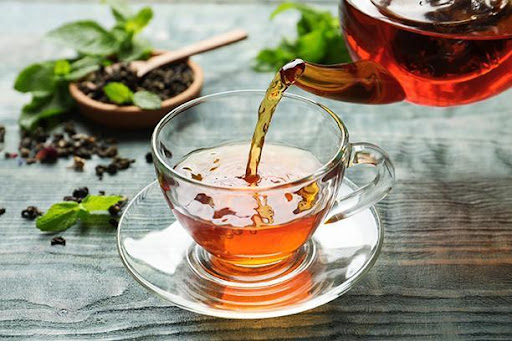- Your cart is empty
- Continue Shopping
Similarities and differences between Tisanes and Herbal Tea
- Tisane
- Posted on
-
by Sivakumar VP

Many individuals have misidentified Tisanes and Herbal tea as the same thing. This blog will discuss the distinctions between the two and provide a comprehensive description of the same.
Herbal tea, incidentally, is not technically “tea” because these products do not often incorporate the leaflets or leaf blossoms of tea plants. Be a savvy shopper—many refreshments described as “herbal tea” with “herbal tea properties” are simply sweet juice. Some herbal teas contain nutrition characteristics and have been used for a long time as alternative remedies. Herbal teas should be used in proportion and with medical supervision, according to nutrition experts, because they can offer considerable hazards to those with specific health concerns. Avoid herbal teas with added sugar or other ingredients. Herbal tea should not be used in place of conventional treatment.

Tisanes, which are water-based mixes or infusions of dried fruits, petals, fragrances, or botanicals, are used to make herbal teas. Tisanes have been proven to have therapeutic properties. Many tisanes have existed for a long time. Numerous plant components were utilized to produce tea in the classical era to heal a variety of diseases and disorders. Tisanes are marketed as a tea by the tea and herbal businesses; nevertheless, tisanes are not real teas. True teas are manufactured from the tea plant Camellia sinensis and can be in black, green, oolong, yellow, or white varieties. Tisanes are prepared from a variety of perennial plants or plant components with therapeutic biocompatibility. Tisane advantages vary depending on the plant. Chamomile tea, for example, may offer different advantages than peppermint tea.
Healers and professionals of alternative medicine utilized various herbs and plants for tea to help mitigate or cure particular diseases and disorders. We lack the medical knowledge to prescribe or advise on the usage of tisanes. There are just too many tisanes and their alleged advantages to the listing.
Some of the other similarities and differences of the same are listed in the points below:
- Herbal Tea can sometimes be extracted from the leaves of the Tea Plant, whilst tisanes do not include any Camellia Sinensis ingredients. Because tisanes are not members of the tea family, they can be produced from a variety of plant kinds or from various portions of the same plant.
- Traditionally herbal tea’s flavour might vary based on the soil and groundwater in which it originates or the Tea Estate’s specialty, as well as how it is managed after collection.
- Herbal tea manufacturers may use herbs and spices to get the flavour or soothing. However, tisanes are made up of these herbs and spices with 100% natural benefits with soothing and comfort.
- Tisanes, on the other hand, are made up of a diverse range of components, giving them a fantastic flavour variety (sweet, verdant, herbaceous, pungent, acidic, peppery, and more), as well as a diverse range of nutritive value.
Conclusion
In brief, tea is the world’s second most common refreshment, underneath the water. Tea is made by seasoning the leaves and stems and plant buds of the Camellia sinensis plant in heated water. Research has found that teas, such as green tea, can improve your immunological system, reduce inflammation, support cardiovascular health, and even help inhibit the emergence of particular malignancies. These health advantages are linked to polyphenols, which are antioxidants contained in tea. You will get benefit out of it if you are not mixing it with milk or sugar substance.
The steeping process may be the same, but there’s a distinct difference between tea and tisane: Oolong, green tea, white tea, and black tea are among those considered “true teas,” a term that refers to decoctions of the Camellia sinensis plant, the species from which all tea leaves are harvested. A tisane refers to any drink derived from a plant outside of the Camellia sinensis family. However, tisanes are a combination of one or more herbs or spices blended to provide the desired health results and flavour.
Tisanes are a popular alternative to traditional tea that is usually caffeine-free. These herbal teas are a soothing and refreshing finish to a meal, complementary to most desserts, and a mild alternative to coffee.

